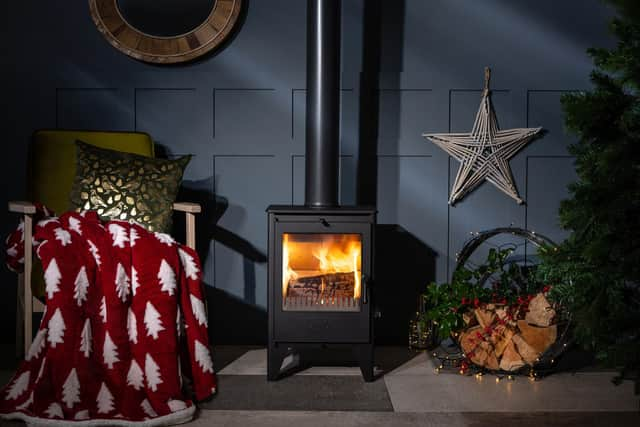Vital advice on how to stay safe when using a wood burning stove or solid fuel fire
Those who have invested will tell you that the warm glow and cosy feel that a wood-burner brings is a huge bonus, though cost efficiency compared with gas is still questionable. The price of kiln-dried logs has risen steeply due to supply and demand issues, so the savings compared to gas are not as compelling as they once were.
Most importantly, those who are thinking of investing in a stove and those who already have them must be mindful of health and safety. Bruce Allen is CEO of Woodsure and HETAS. Woodsure is a not-for-profit organisation, striving to raise the quality of woodfuel in the industry, while HETAS is the Heating Equipment Testing and Approvals Scheme, a national organisation set up to ensure consumer safety when it comes to the safe, efficient and environmentally responsible use of biomass and other solid fuels.
Advertisement
Hide AdAdvertisement
Hide AdHe says: “Regrettably, an alarming 121 chimney fires are reported across Yorkshire annually, a number which could be much lower if adequate chimney and stove maintenance were upheld.”


Bruce has this advice for solid fuel users on what they should do to avoid fires and other issues that pose a risk to health and life: The most important piece of advice I can offer homeowners who use and often rely on solid fuel appliances is to get a regular sweep and service. Booking a regular chimney or flue sweep is essential to maintain their efficient and safe operation.
At HETAS, we recommend homeowners get their chimney swept at least twice a year when burning wood or bituminous house coal, and at least once a year when burning smokeless fuels. This should be carried out by a HETAS Approved Sweep. Any solid fuel appliances also need an annual check up so ensure you get these serviced too.
Ideally this would take place now, just before the heating season starts in earnest, especially as the appliance won’t have been used for a considerable time. A sweep will get rid of any deposits or debris from your chimney or flue which could increase the risk of a chimney fire.
Advertisement
Hide AdAdvertisement
Hide AdOnce you know your stove is in good-working order, the next step is choosing the correct fuel as the consequences of burning the wrong fuel can be catastrophic or even result in hefty fines.
Homeowners should avoid wet wood entirely. Wood with a moisture content of higher than 20 per cent releases up to five times more emissions. For those in Smoke Control Areas, this can result in fines.Look for the Ready to Burn mark as a clear and easy way of ensuring that any fuel you buy is dry and ready to use.
It can also be tempting to throw other things,such as cardboard, on to the fire due to its easily combustible nature but do not do it. Materials such as paper and cardboard often generate large amounts of smoke that can cause chimney blockages and significant damage, not only increasing the risk of fire but also having a negative impact on air quality.
Similarly, any wood that has been painted or treated needs to be avoided at all costs. Offcuts and old pallets can seem like the easy choice for some cheap firewood, but when heated and set alight, chemicals found in the paint, wood treatment or preserver are released, resulting in toxic fumes being emitted into the environment and home. This is dangerous for all, but especially for those with compromised respiratory symptoms.
Advertisement
Hide AdAdvertisement
Hide AdMy third and final piece of advice is arguably the most important when it comes to the safety and health of your family. Fuels such as gas, oil, solid mineral fuel and biomass have the potential to emit carbon monoxide, which cannot be seen, smelled or tasted and is very difficult to detect.
To ensure you are protected from any harmful CO, homeowners needd to fit an audible CO alarm conforming to BS EN 50291 and positioned in
accordance with Building Regulations Approved Document. A HETAS registered business can help you with this if you are unsure.
Knowing the early symptoms of CO poisoning is key in preventing serious illness and fatalities. The common ones include headaches, breathlessness, nausea, dizziness, chest/stomach pains, erratic behaviour and visual problems.
Advertisement
Hide AdAdvertisement
Hide AdIf you suspect fumes are escaping from your appliance, or your CO alarm alerts you, you should immediately turn the appliance off and open doors and windows to ventilate your home. Everyone should leave the building and not return until your appliance has extinguished and the air in the room is clear, calling 111 or 999 if anyone is feeling unwell.
To learn how to get the best out of your stove or to search for HETAS registered businesses in Yorkshire, visit: hetas.co.uk. Pictured is an Esse Ecodesign stove, £1,059 from directstoves.com.